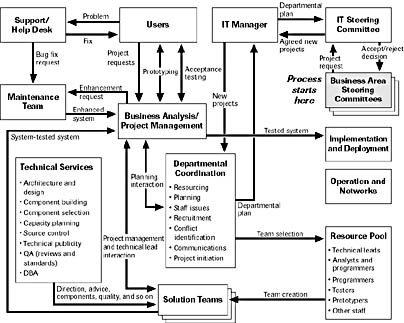We were asked to "recommend an optimum Visual Basic development structure and process, irrespective of current process and structure." This request came from a new client who intended to migrate from mainframe systems. We were asked to consider the following questions:
How will Visual Basic software quality be maintained?
How will people multitask across new Visual Basic application development and mainframe application maintenance and support?
How will Visual Basic applications be installed, implemented, and deployed?
How will individual projects fit in with an overall distributed architecture?
How will the optimum culture and attitude be attained?
How will we make the team dynamic and responsive?
How will projects be properly planned, tracked, and managed, and who will be responsible for ensuring that this happens?
How will code reuse be achieved?
How should the company use prototyping?
How will external components (for example, ActiveX Servers, DLLs, VBXs, OCXs, and Visual Basic classes) be assessed, procured, and controlled?
The process described below was the result of a series of workshops with in-house staff. A summary of the process is illustrated in Figure 15-5.

Figure 15-5 A possible Visual Basic 6 development process